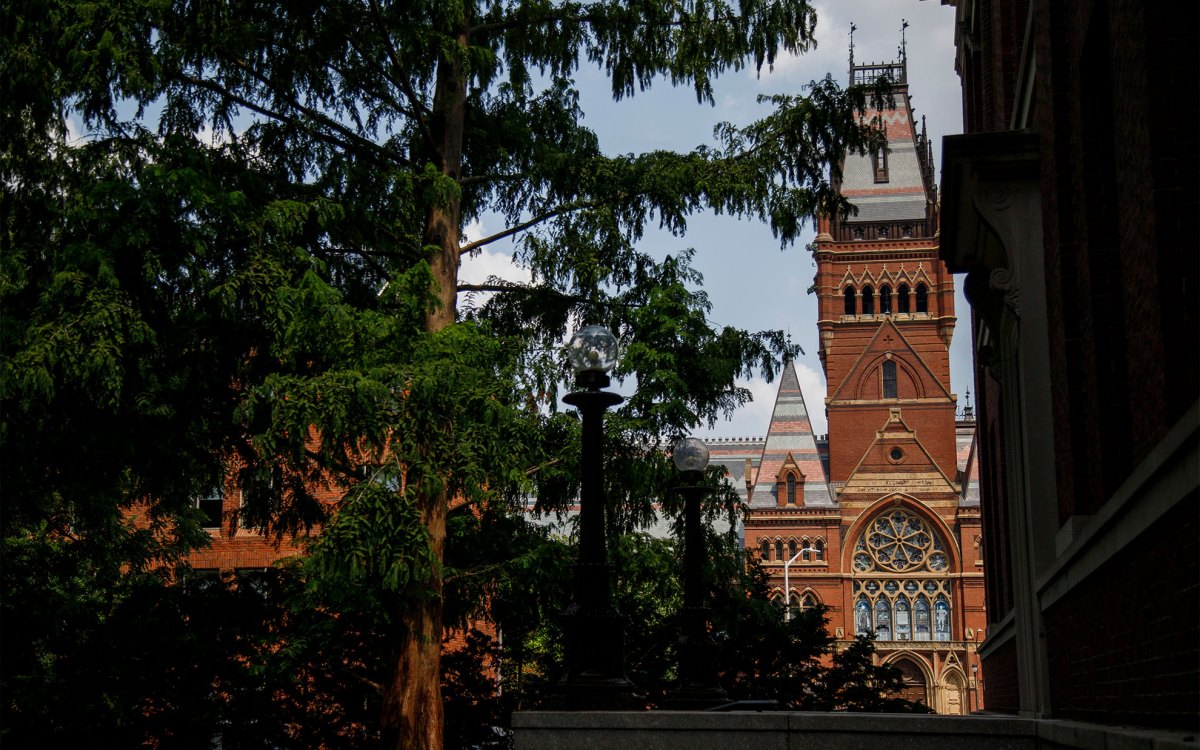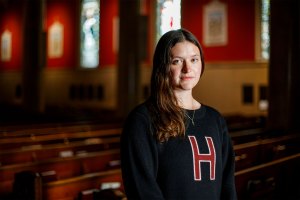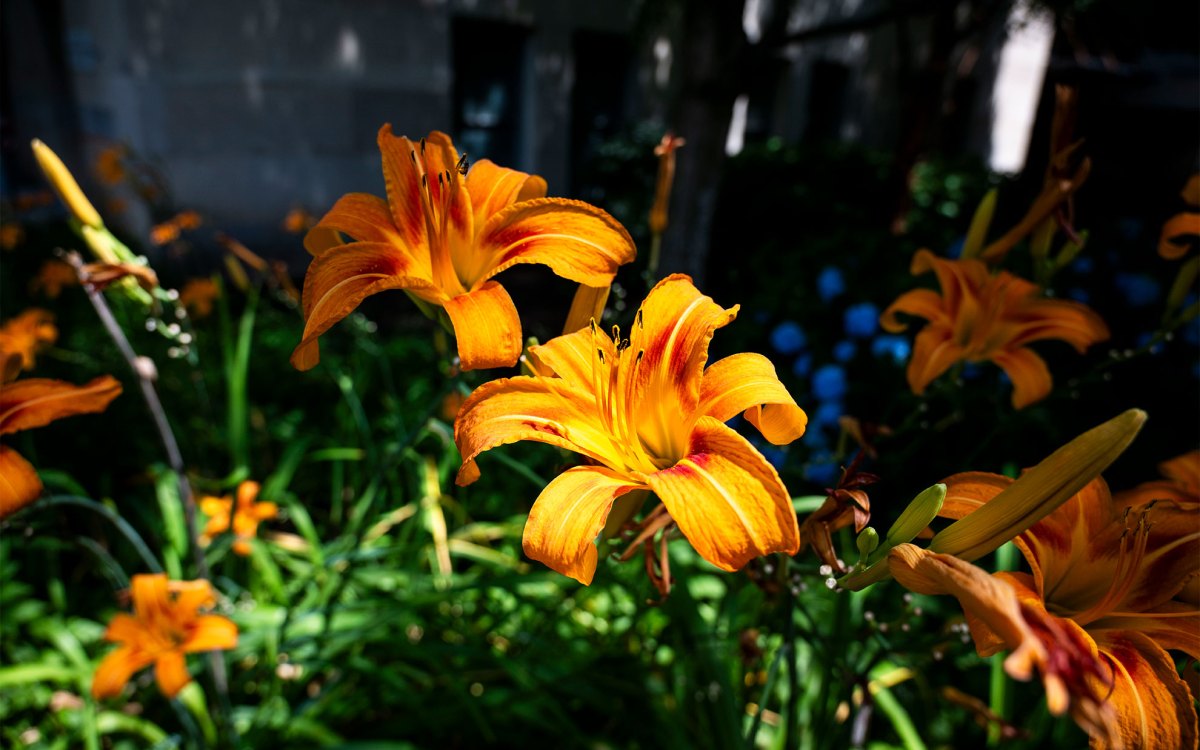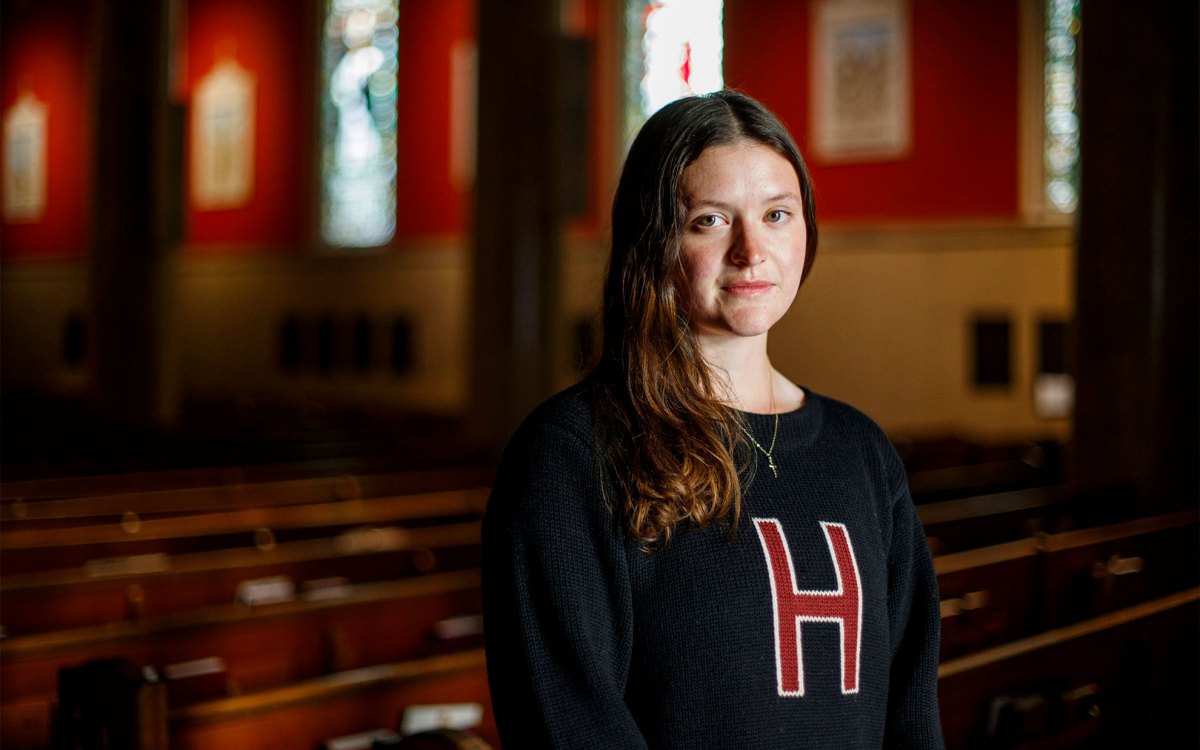Harvard College admits 2,056 to Class of ’21
Percentage from diverse backgrounds rises; a record 39,506 applied
More like this
In January, thousands of prospective freshmen submitted applications in hopes of being accepted to Harvard College. Their long wait is finally over, as 2,056 of these students were invited today to join the Class of 2021.
“When I found out I was accepted to Harvard, it didn’t feel real,” recalled Toluwalase Oladitan, a current freshman, who was with a few of her best friends when she got the news last year. “When I opened my email and logged into my portal, I was stunned and was not prepared. It was just an overwhelming feeling of joy that I really can’t explain.”
With a record number of applications, 39,506, the admitted class saw increases in the percentages of African-American and Asian-American students, as well as first-generation students and students from low- and moderate-income families, though it is statistically similar to the Class of 2020. Women constitute 49.2 percent of newly admitted students. Asian-American students make up 22.2 percent, African-Americans 14.6 percent, Latinos 11.6 percent, Native Americans 1.9 percent, and Native Hawaiians 0.5 percent. First-generation students constitute 15.1 percent of those admitted.
“Since launching the Harvard Financial Aid Initiative in 2005, Harvard has been able to attract ever-increasing numbers of outstanding students from a much wider range of backgrounds than in the past. During this time, the applicant pool has doubled in size,” said William R. Fitzsimmons, dean of admissions and financial aid. “The different life experiences of our students add immeasurably to the academic and extracurricular life of the College.”
The majority of Harvard students receive need-based aid, and the average family contribution for those receiving aid is $12,000. Families with incomes up to $150,000 and typical assets pay 10 percent or less of their annual incomes.
“One in five Harvard families have annual incomes under $65,000 and pay nothing toward the cost of their student’s education,” said Sally C. Donahue, Griffin Director of Financial Aid. “Their students also now have the benefit of a $2,000 start-up grant that helps with move-in expenses and their transition to College, as well as their ability to access academic and extracurricular life in the same manner as all other undergraduates.”
“Reaching out to promising students makes a crucial difference in attracting strong applicants to apply and matriculate,” said Anne M. De Luca, associate dean for admissions and financial aid recruitment. “Each year we visit 150 locations in the United States and travel to additional cities around the world. Most visits include evening information sessions for students and their families, as well as high school guidance counselor breakfasts.”
Oladitan remembers meeting a Harvard admissions officer at a college fair at her high school, Brooklyn Technical High School, in New York City. “I saw an opportunity to ask questions about the application process and Harvard in general that I wouldn’t easily be able to get from a website,” she said.
For the admitted Class of 2021, 21.4 percent come from the mid-Atlantic, 18.7 percent from the South, 16.5 percent from New England, 15.7 percent from the Pacific, 15 percent from the Midwest, Central, and Mountain states, and 0.3 percent from American territories. International students constitute 11.4 percent of the admitted students.
As for intended academic concentrations, 26.5 percent indicated an interest in social sciences, 19.3 percent in computer science and engineering, 19.2 percent in the biological sciences, 15.5 percent in the humanities, 7.2 percent in mathematics, 6.9 percent in the physical sciences, and 5.4 percent were undecided.
Members of the teaching faculty spend many hours talking with prospective students and reading applications. “Faculty evaluate research and portfolios across all disciplines — going far beyond test scores and grades in their careful evaluations,” said Marlyn E. McGrath, director of admissions. “Many of them will be reaching out to students over the next few weeks, and they will also play a major role in our visiting program for admitted students.”
That program, Visitas, is scheduled for April 22-24. Oladitan recalled engaging with many faculty members through tours and information sessions during her own trip to Cambridge for Visitas. “I actually remember taking a tour of Northwest Labs with Professor Andrew Berry in life sciences,” she said. “I remember him telling me and my friend about the cool lab work being done at Harvard.”
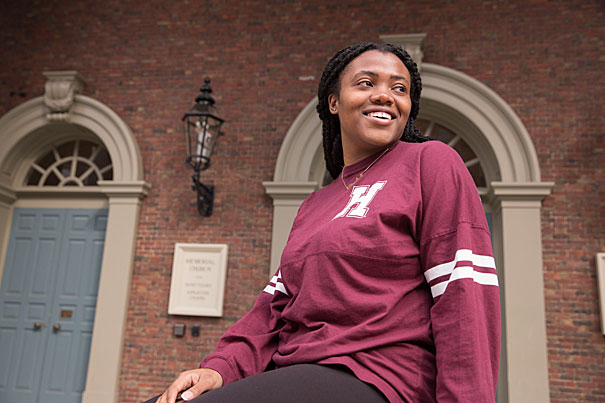
Oladitan didn’t think about the encounter often afterward until this spring, when Berry showed up in her Life Science 1b class. “To my surprise, he was the guest lecturer there to teach us about evolution and speciation, and I was just taken aback that things sort of came back full circle. Professor Berry had a part in my choosing to come to Harvard, and seeing him again in lecture just made me feel like I made the right choice all over again.”
Current Harvard students also play a vital role in undergraduate recruitment. As members of critically important student groups, including the Undergraduate Minority Recruitment Program (UMRP), the Harvard First-Generation Program, and the Financial Aid Initiative, these students make phone calls, send emails, conduct tours, and host admitted students.
“I was contacted by students of the UMPR,” said Oladitan. “I didn’t know what it was at the time, but I just felt special and already welcomed into the Harvard community. And in the application process, I was able to email and ask questions about student life at Harvard that catered to my interests. And that’s why I appreciate the UMRP a lot for what they did and still continue to do for prospective students who look like me.”
Oladitan herself now volunteers as a student recruiter with the UMRP. “I want to be the face to seniors and younger students who I saw when I was applying,” she said. “Interacting with the UMRP made me feel more comfortable and confident, and that’s what I want to give to other prospective students who are in my shoes.”
Admitted students have until May 1 to accept their offers of admission.
